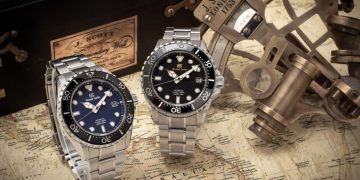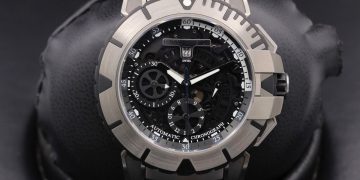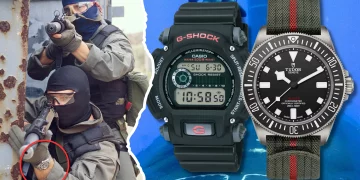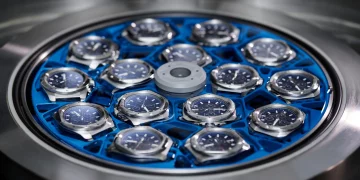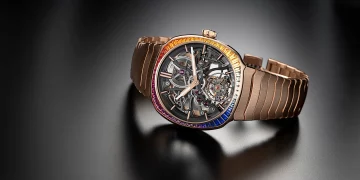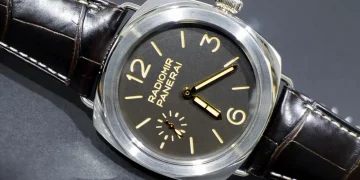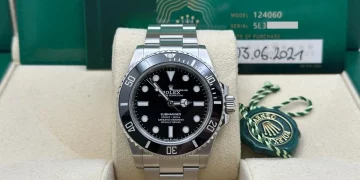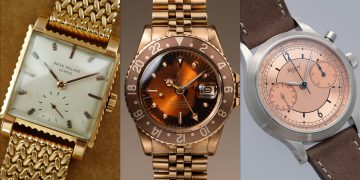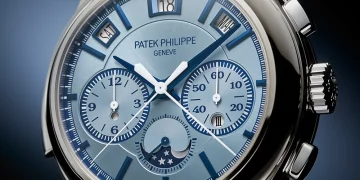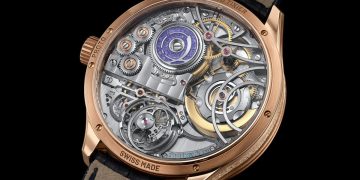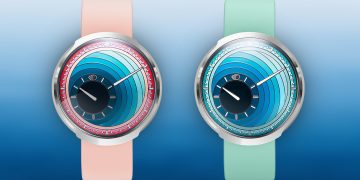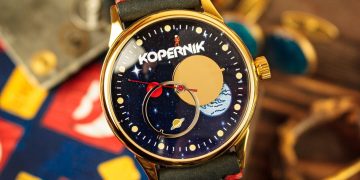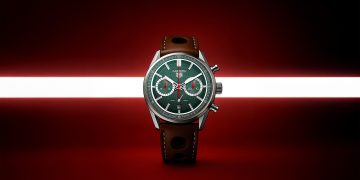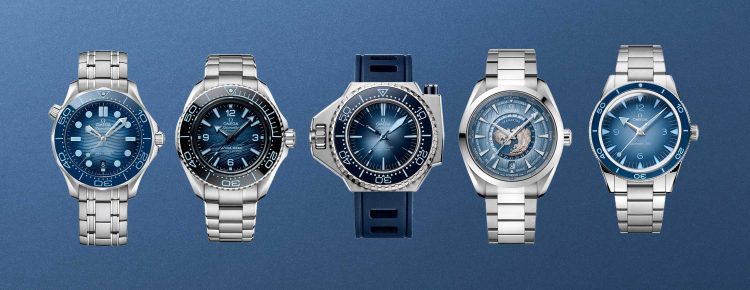Introduction: The Rise and Fall of an Icon
The world of horology is filled with stories of legendary watch brands, some of which have flourished for centuries, while others have faced near extinction. One such brand, known for its fine craftsmanship and iconic designs, almost disappeared from the industry entirely. This is the untold story of Omega, a name that is synonymous with Swiss precision, iconic timepieces, and a rich history that spans over 170 years.
Omega’s journey is marked by dramatic highs and lows, from its rise to prominence as a luxury watch brand to its near-collapse due to financial and strategic missteps. Yet, through resilience, innovation, and an unyielding commitment to quality, Omega has managed to not only survive but thrive once more.
This article will delve into the brand’s rise, the challenges that nearly led to its downfall, and the remarkable resurgence that has cemented its place in the modern watch industry.
The Early Days: A Humble Beginning
Omega was founded in 1848 by Louis Brandt in La Chaux-de-Fonds, Switzerland, initially under the name “Louis Brandt & Fils.” The brand’s early days were marked by precision and innovation, with Louis creating watches that quickly gained a reputation for being highly accurate and reliable.
However, it wasn’t until 1869, when Brandt’s sons took over the company, that the brand truly began to take shape. The company changed its name to Omega in 1894, a nod to the Greek letter “Ω,” symbolizing perfection and the ultimate achievement. This rebranding would become the cornerstone of the brand’s identity.
Omega’s rise to fame was swift. In 1895, the company released its first mass-produced chronometer, a precision watch that was not only highly accurate but also affordable. This move set Omega apart from other watchmakers who were still crafting timepieces by hand, often at a significantly higher price point.
The early 20th century saw Omega continue to expand its reputation. It became the official timekeeper for the Olympic Games in 1932, further cementing its place as a trusted brand for precision timekeeping.
The Golden Age: Iconic Milestones and Unprecedented Success
Omega’s most iconic period of success began in the 1950s and 1960s, a time when the brand introduced some of its most legendary timepieces. One of its standout creations was the Omega Seamaster, introduced in 1948. Known for its water resistance and durability, the Seamaster became the watch of choice for divers and adventurers, including the fictional spy James Bond. The iconic connection with Bond started in 1995 with the release of GoldenEye, where Pierce Brosnan wore an Omega Seamaster in the film.
In the 1960s, Omega achieved another remarkable milestone by becoming the first watch worn on the moon. The Omega Speedmaster was chosen by NASA in 1965 to be part of the space program, and it became the official chronograph for all Apollo missions. The Speedmaster’s role in the Apollo 11 mission, when Neil Armstrong and Buzz Aldrin became the first humans to walk on the moon, cemented Omega’s legacy as a true symbol of exploration and achievement.
During this time, Omega’s popularity soared, and the brand was seen as one of the top luxury watchmakers in the world. The company’s reputation for innovation, design, and precision made it a favorite among collectors, athletes, and professionals alike.
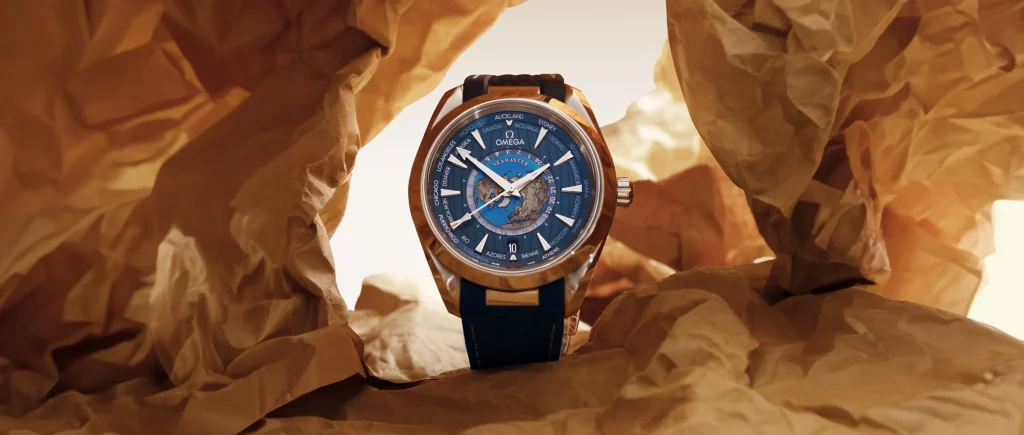
The Fall: Financial Struggles and Changing Markets
Despite its successes, the 1970s and 1980s proved to be a tumultuous period for Omega. The rise of quartz watches during the 1970s, particularly from Japanese brands like Seiko, presented a significant challenge to traditional Swiss watchmakers. The quartz crisis, as it became known, drastically impacted Omega and other luxury brands, as consumers gravitated toward more affordable and accurate quartz-powered timepieces.
Omega, traditionally known for its mechanical movements, found itself struggling to keep pace with the changing demands of the market. In addition, internal challenges, including shifts in management and strategic direction, exacerbated the brand’s difficulties. By the early 1980s, Omega was facing a decline in sales and an uncertain future.
The situation worsened when Omega’s parent company, the Swatch Group, took control of the brand. Swatch, known for producing lower-cost timepieces, shifted Omega’s focus toward mass-market appeal. This move, which sought to lower production costs and increase profitability, led to a loss of the brand’s premium image. As a result, Omega’s status as a luxury brand began to erode, and it became more associated with affordability than exclusivity.
By the mid-1990s, Omega’s reputation had significantly diminished. Its watches were no longer the must-have items they once were, and the company was at risk of fading into obscurity.
The Resurgence: Reclaiming Its Legacy
Despite the struggles of the previous decades, Omega managed to regain its footing in the late 1990s and early 2000s. The resurgence of the brand can be attributed to several key factors, each of which played a critical role in restoring Omega’s prestige and reputation.
Rebuilding the Iconic Speedmaster
One of the first steps in Omega’s resurgence was a renewed focus on its most iconic model: the Speedmaster. In 1998, Omega introduced a special-edition Speedmaster Professional to commemorate the 30th anniversary of the Apollo 11 moon landing. This limited-edition release captured the attention of collectors and enthusiasts, rekindling interest in the Speedmaster and re-establishing it as one of the most coveted watches in the world.
The brand also began introducing new models and enhancements to existing collections, offering a blend of classic designs with modern technology. The Speedmaster “Dark Side of the Moon” collection, released in 2013, is an excellent example of Omega’s ability to evolve while honoring its legacy.
Emphasizing Innovation: Co-Axial Escapement
In the early 2000s, Omega introduced a groundbreaking technology that would define the brand’s future: the Co-Axial escapement. This innovation, developed by watchmaker George Daniels, drastically improved the accuracy and longevity of mechanical movements. Omega’s exclusive use of the Co-Axial escapement system set the brand apart from competitors, giving it a significant advantage in the luxury watch market.
Strengthening Brand Partnerships
Omega also focused on strategic partnerships to further bolster its image. One of the most notable collaborations was with the James Bond franchise, which had already helped Omega gain significant exposure in the 1990s. In 2006, Omega began a long-term partnership with the Beijing 2008 Summer Olympics as the official timekeeper, reinforcing the brand’s commitment to precision and performance.
Additionally, Omega strengthened its presence in the world of competitive sports, including becoming the official timekeeper for America’s Cup sailing and various golf tournaments. These partnerships helped Omega regain its association with high-performance and excellence, values that resonated with its luxury audience.
The Lessons Learned: What the Brand’s Journey Teaches Us
Omega’s near-disappearance and subsequent revival offer several valuable lessons, both for the watch industry and for businesses in general.
- Adaptation is Key: The quartz crisis taught Omega that the watchmaking industry is subject to rapid changes, and it must be agile enough to respond. Omega’s ability to pivot, embracing both traditional craftsmanship and modern technology (such as the Co-Axial escapement), allowed it to stay relevant in a competitive market.
- Innovation Drives Resilience: Omega’s commitment to innovation, particularly with the introduction of the Co-Axial escapement, proved that even iconic brands must continue to innovate to remain competitive. The brand’s ability to balance tradition with modern advancements helped it stand out.
- Brand Legacy Matters: Omega’s journey highlights the importance of preserving and nurturing a brand’s legacy. By focusing on its iconic models, like the Speedmaster and Seamaster, Omega reinforced its core identity, ensuring that it remained synonymous with excellence and precision.
- Strategic Partnerships Can Reinforce a Brand: Omega’s collaborations with the Olympics, the James Bond franchise, and other high-profile events helped bolster its image and regain the trust of its target audience. Well-placed partnerships can be a powerful tool in re-establishing a brand’s status.
Conclusion: The Future of Omega
Omega’s story is a testament to the power of resilience and reinvention. Through its rise, fall, and resurgence, the brand has demonstrated that even the most iconic names in the luxury industry must constantly evolve to survive. Today, Omega stands as one of the foremost watch brands in the world, combining timeless craftsmanship with cutting-edge innovation. Its journey offers a roadmap for any brand seeking to navigate the challenges of an ever-changing market while staying true to its legacy.


